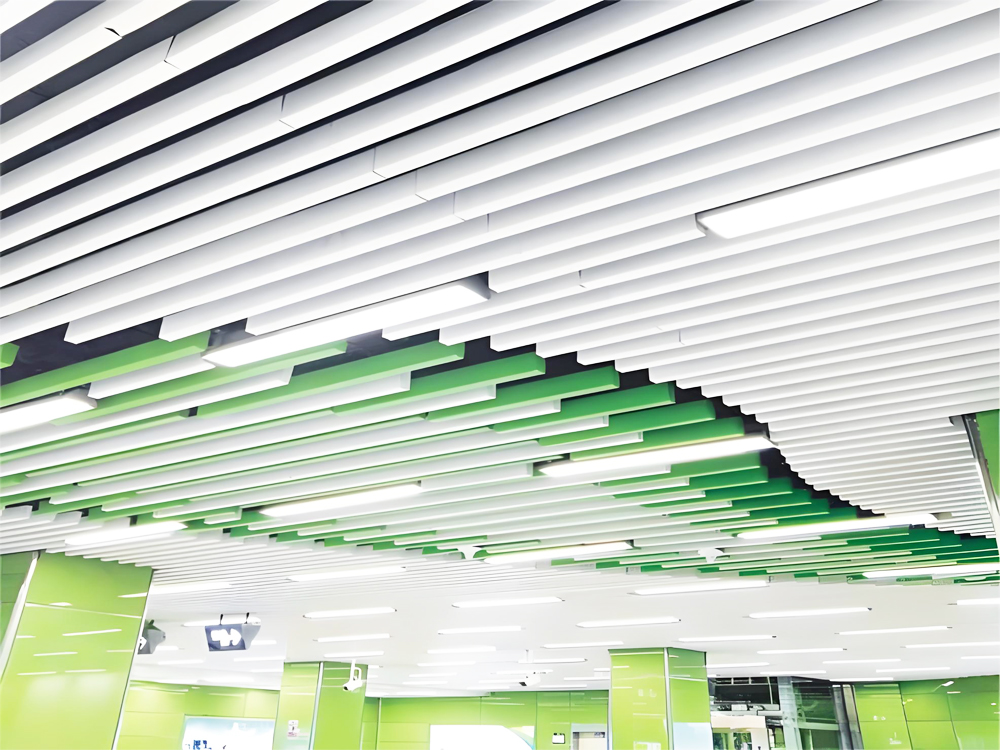Exploring the Synergy Between Aluminum Ceilings and Modern Architecture
Author:Jayminton Time:2024-06-27

In the world of contemporary architecture, each component of a building is carefully selected not only for its functionality but also for its aesthetic contribution to the overall design. One such pivotal element that has increasingly become synonymous with modern architectural aesthetics is the Aluminum Ceiling. Beyond its practical benefits, an aluminum ceiling serves as a defining feature that enhances both the visual appeal and functionality of a space.
Aesthetic Appeal and Design Versatility
Aluminum ceilings are celebrated for their sleek and minimalist appearance, which complements the clean lines and geometric shapes often favored in modern architecture. Unlike traditional ceiling materials such as plaster or wood, aluminum offers a distinctively modern look characterized by its smooth surface and metallic sheen. This aesthetic versatility allows architects and designers to create spaces that exude sophistication and contemporary charm.
Moreover, aluminum ceilings can be customized in terms of color, finish, and texture, offering endless design possibilities. They can be installed as seamless, monolithic panels that span large areas without visible joints, or they can feature perforations and patterns that enhance acoustics and visual interest. This flexibility in design makes aluminum ceilings suitable for a wide range of architectural styles, from industrial and minimalist to high-tech and avant-garde.
Functional Advantages and Practical Considerations
Beyond aesthetics, aluminum ceilings offer several practical advantages that contribute to their popularity in modern building design:
Durability and Longevity: Aluminum is inherently resistant to corrosion, moisture, and environmental wear, making it ideal for both interior and exterior applications. It retains its structural integrity over time, requiring minimal maintenance compared to traditional materials.
Lightweight Construction: Aluminum ceilings are lightweight yet robust, facilitating easier installation and reducing structural load on buildings. This characteristic is particularly advantageous in large-scale projects where efficiency and speed of installation are key considerations.
Environmental Sustainability: Many aluminum Ceiling Panels are made from recycled materials and can themselves be recycled at the end of their lifespan, aligning with sustainable building practices. Additionally, aluminum's energy-efficient properties contribute to green building certifications.
Integration into Architectural Design
The integration of aluminum ceilings into architectural design extends beyond their functional and aesthetic benefits. They often serve practical purposes such as concealing HVAC systems, lighting fixtures, and wiring while maintaining accessibility for maintenance. The reflective properties of aluminum can also enhance natural and artificial lighting within a space, creating a brighter and more inviting atmosphere.
In contemporary architecture, the aluminum ceiling is not merely a functional component but a statement of modernity and innovation. Its ability to seamlessly blend with diverse architectural styles while offering durability, sustainability, and design flexibility underscores its pivotal role in shaping the built environment of today and tomorrow.
Conclusion
The aluminum ceiling stands as a testament to the symbiotic relationship between form and function in modern architecture. Its aesthetic allure, coupled with practical advantages such as durability, sustainability, and design versatility, makes it an indispensable choice for architects and designers striving to create spaces that are both visually striking and functionally efficient. As architectural trends continue to evolve, the aluminum ceiling remains a timeless symbol of contemporary design excellence, harmonizing innovation with enduring elegance in buildings around the world

 S1 Clip-in Metal ceiling System
S1 Clip-in Metal ceiling System JMT-L4.2 U-Baffle System
JMT-L4.2 U-Baffle System JMT Aluminum Wall Cladding
JMT Aluminum Wall Cladding Aluminum Honeycomb Panel
Aluminum Honeycomb Panel Air-Condenser Cover
Air-Condenser Cover Metal Heat Cover
Metal Heat Cover Singapore Changi Airport T2 Arrival
Singapore Changi Airport T2 Arrival Australia Marvrl Stadium City Edge
Australia Marvrl Stadium City Edge Enterprise Information Announcement
Enterprise Information Announcement Construction Industry Solutions
Construction Industry Solutions About Jayminton
About Jayminton Contact US
Contact US